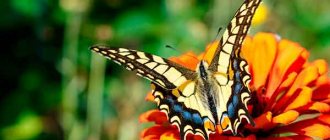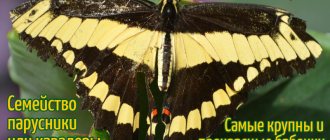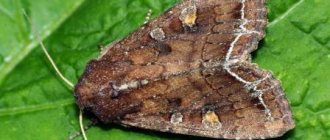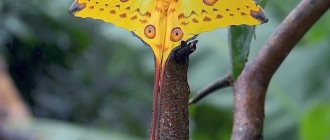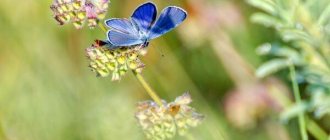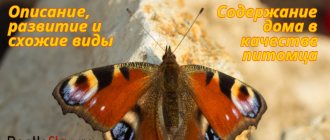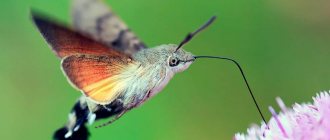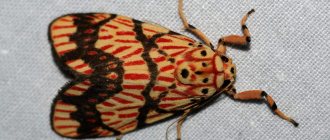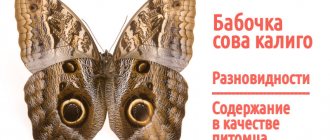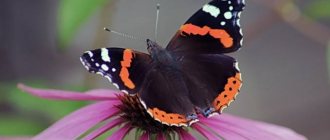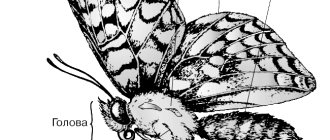Swallowtails or cavaliers are a family that unites the largest and most beautiful butterflies. The greatest diversity of species is found in the tropics, but interesting and colorful insects can also be seen on other continents. The family includes 700 species of swallowtails, 20 live in Russia. The swallowtail butterfly is a typical representative of the genus Papilio with long tails and wavy wings. The color of the insect is yellow with a black pattern and a red-blue eye. Despite the fact that the butterfly is found throughout the Palearctic, its numbers have declined sharply. To protect lepidoptera from complete destruction, the species was listed in the Red Book.
Morphological description
Swallowtail swallowtail (Papiliomachaon) is one of the most common representatives of its family. Carl Linnaeus named the species after the mythical Greek physician Machaon, who participated in the campaign against Troy. The size of the wings of the male is 65-80 mm, of the female - 75-95 mm. The main background of the wings is yellow. In the middle of the forewing there is a pattern of black stripes and spots, the base is darkened. Along the edge there is a wide black border with yellow hemispheres. The main part of the hind wings is yellow; closer to the edge there is a blue band with a black border. The outer edge has a red eye with a black outline. The photo shows that the edge of the hind wings of the swallowtail butterfly is wavy, the tails reach a length of 10 mm.
Information. Papiliomachaon of the first generation are light in color, representatives of the second generation are noticeably larger, their colors are richer and brighter.
The body of the moth is light-colored and covered with sandy hairs. There are longitudinal black stripes on the chest and abdomen. The head is round and inactive. On the sides are complex compound eyes. The organ of vision helps insects navigate in space, distinguish objects and some colors. In the frontal part there are long, segmented antennae ending in a club. Mouthparts are sucking type. This is a long black proboscis that allows it to drink nectar from flowers. In a calm state, it is twisted into a spiral.
Subspecies
The wide distribution area of swallowtails has led to the formation of various subspecies, differing in color and size.
- P. m. bairdii is a black swallowtail butterfly native to North America. The dark shape is similar to the polyxene swallowtail. The main color is black. On the front wings there is a pattern of yellow strokes and spots located on a black border. On the hind wings, in addition to yellow and blue spots near the tails, there is an orange eye.
- P. m. ussuriensis - lives in Primorye and the Amur region, the group is characterized by large insect sizes. Females have a wingspan of 95 mm, and males have a wingspan of 85 mm. Insects are distinguished by their rich black and blue colors.
- P. m. hippocrates - a subspecies has settled in Japan and nearby islands, in which a blue stripe above a red eye is enclosed between two black ones.
- P. m. kamtschadalus are unique butterflies of bright yellow color with a faded black pattern and shortened tails. The endemic subspecies lives on the Kamchatka Peninsula.
- P. m. gorganus - continental subspecies is widespread on the plains of Russia, in the foothills of the Caucasus and Central Europe. What does the swallowtail butterfly, found in most European countries, look like? The wingspan does not exceed 60-70 mm, their tails are 6-7 mm long. The background of the wings is light yellow with a distinct black pattern and blue spots.
Notes[ | ]
- Striganova B. R., Zakharov A. A.
Five-language dictionary of animal names: Insects (Latin-Russian-English-German-French) / Ed. Doctor of Biology sciences, prof. B. R. Striganova. - M.: RUSSO, 2000. - P. 265. - 1060 copies. — ISBN 5-88721-162-8. - Korshunov Yu. P.
Keys to the flora and fauna of Russia // Mace Lepidoptera of Northern Asia. Issue 4. - M.: Partnership of Scientific Publications KMK, 2002. - P. 28. - ISBN 5-87317-115-7. - ↑ 12
Kaabak L.V. Butterflies of the world. - M.: Avanta+, 2007. - 184 p. (The most beautiful and famous) - Condamine FL, Toussaint EFA, Cotton AM, Genson GS, Sperling FAH, Kergoat GJ 2013. Fine-scale biogeographical and temporal diversification processes of peacock swallowtails ( Papilio
subgenus
Achillides
) in the Indo-Australian Archipelago // Cladistics. Vol. 29. P. 88-111. - Tuzov VK, Bogdanov PV, Devyatkin AL, Kabak LV, Korolev VA, Murzin VS, Samodurov GD, Tarasov EA Guide to the butterflies of Russia and adjacent territories (Lepidoptera, Rhopalocera). Vol. I. (Hesperiidae, Papilionidae, Pieridae, Satyridae). Sofia, 1997. 480 p.
- Dubatolov V.V., Kosterin O.E. 1999. Daytime lepidoptera (Lepidoptera, Hesperioidea, Papilionoidea) of the international reserve “Dauria” // Insects of Dauria and adjacent territories. Vol. 2. Proceedings of the State Biosphere Reserve "Daursky". - Novosibirsk. — P. 138—194.
- Dubatolov V.V., Streltsov A.N., Sinev S.Yu., Anikin V.V., Barbarich A.A., Barma A.Yu., Baryshnikova S.V., Belyaev E.A., Vasilenko S. .V., Kovtunovich V.N., Lantukhova I.A., Lvovsky A.L., Ponomarenko M.G., Sviridov A.V., Ustyuzhanin P.Ya. 2014 [2015]. Lepidoptera of the Zeya Nature Reserve / ed. V.V. Dubatolova. Blagoveshchensk: BSPU Publishing House. 304 pp.
- Dubatolov V.V., Mutin V.A., Novomodny E.V., Dolgikh A.M. 2010. Distribution limits of diurnal lepidoptera (Insecta, Lepidoptera: Hesperioidea, Papilionoidea) of the subboreal and southern representatives of the temperamental complex in the Lower Amur region // Amur zoological journal. T. 2. No. 3. P. 253-275.
Appearance of the caterpillar
In May, the first generation swallowtail butterfly caterpillars appear. From the eggs they emerge black with many orange warts and a white area on the back. After several molts, the caterpillar becomes bright green with narrow black transverse stripes and orange spots on each body segment. The larva has three pairs of true legs on the thoracic segment and five pairs of pseudolegs on the abdomen.
The larva has a defense mechanism against enemies. This is the fork-shaped gland osmetria. It is located in the prothoracic segment and looks like orange horns. The secretions and smell of osmetria repel ants, wasps and flies. The larvae use it at an early age. It does not affect larger predators - birds. The caterpillars are hunted by tits, reed buntings, and nightingales. They destroy 40-50% of the offspring.
Keeping at home
To keep a moth in the house, you should prepare a 10 liter aquarium. At the bottom of the container you need to put a thick layer of paper that will absorb excess moisture. Also in the aquarium you need to place branches sticking out in different directions. On them the butterfly can spread its wings and the caterpillar can pupate.
To feed the insect, you need to prepare a honey solution in a ratio of 1:5. You need to moisten a cotton pad in it and place it on a saucer. After this, carefully hold the butterfly on your finger and use a toothpick to spin its proboscis so that it reaches the “nectar.” The moth should be fed once a day.
Contents in the apartment
Periodically you need to spray plain water from a spray bottle inside the aquarium.
The lifespan of the Swallowtail butterfly at home is 2 weeks.
When growing a moth from a caterpillar, you need to place a bunch of dill inside the aquarium and transfer the larva to it. Sometimes the greens should be sprayed with water and replaced with fresh ones. After 12 days the larva will pupate. In this case, all that remains is to wait for the moth to appear.
Related species
The Maak's swallowtail or blue swallowtail butterfly also belongs to the genus Papilio. The insect is named after R. K. Maak, a researcher of Siberia and the Far East. The wingspan of the largest butterfly in Russia is 125-135 mm. The color of the forewings of males has a green tint and black stripes. The hind wings are dark blue with blue spots. Females are brown or black in color; the hind wings have a pattern of red spots at the outer edge.
The Maaka tail-bearer lives in Primorye, Transbaikalia, Sakhalin, Korea, Japan and China. The insect lives in deciduous and mixed forests. Caterpillars feed on trees from the rue family - Amur velvet, Sakhalin velvet. The blue swallowtail is listed in the Red Book of the Sakhalin Region.
Reproduction
Sometimes along the banks of reservoirs or near puddles on the roads you can find males forming flocks of several dozen insects. In the first days of summer, females hide in the crowns of trees, and a little later they begin to visit meadow flowers or fly into flower beds.
For butterfly laying, choose the underside of a sheet of Amur velvet. After some time, small green caterpillars covered with light dots are born from the eggs.
Young caterpillars begin to eat leaves. To do this, they move to the top of the leaf and begin to eat it from the edge to the central vein. In years favorable for reproduction, caterpillars, due to lack of food, can move to ash trees, which, like Amur velvet, are a member of the Rutaceae family.
With age, they change their color to a darker one, black spots with a light pupil appear on their sides, and their back is covered with light spots or oblique stripes. At a certain period, the caterpillar becomes a pupa, which is attached to a branch with a silk thread.
The pupae overwinter on trees, and in the spring the young generation of Maak's swallowtails emerge from them.
In the northern habitat, swallowtails from the first generation fly out in the second half of May and until the beginning of August. The next generation appears in mid-August to mid-September. In the southern habitat, the emergence of two generations is possible at the end of June.
Habitats and lifestyle
In describing the lifestyle of the swallowtail butterfly, a significant role is given to two points: nutrition and reproduction. In the short time allotted to the imago, they must gain strength for mating and continue the race. Favorite habitats: steppes with various herbs, well-warmed forest glades and edges, roadsides and river banks. In the northern regions it is found in the tundra. Some individuals fly into cities. In the mountainous regions of the Alps they fly to a height of 2000 m. Adults are prone to migration, flying considerable distances in search of comfortable living conditions and food plants.
Butterflies fly in temperate climates from May to August, in the south - from March to November. The bulk of insects give two generations, in the north one, in North Africa - three.
Reproduction
The fertilized female lays single eggs on food plants. In the middle zone these are umbelliferous: dill, parsley, angelica, mustard plaster, celery and cumin. In other regions, rutaceae, birch, and asteraceae plants are found. The laying is carried out on the lower part of the leaf or stem, while the butterfly hangs in the air. The female's fertility is 100-120 eggs. They are initially green in color, then become yellow-brown.
A week later, a caterpillar 3 mm long appears. In warm weather it feeds a lot and grows quickly. Prefers to eat ovaries and flowers, less often leaves. The caterpillar changes through 5 instars. The adult larva grows up to 50 mm. The development period depends on weather conditions, in favorable circumstances it is 15-18 days. Before pupation, the caterpillar stops feeding and looks for a suitable place.
For pupation, the stem of a food plant or a nearby bush is selected. The insect is attached to the branch with a silky belt. Summer pupae of the first generation are green. After 2-3 weeks, the imago emerges from them. Overwintering pupae are brown; this stage lasts throughout the entire cold period.
Nutrition
Sailboats fly actively in warm sunny weather. Adults need additional nutrition on flowers and replenishment of microelements. Male swallowtails often gather in groups of 10-15 individuals on the wet banks of water bodies and sit on excrement and dung. What does the swallowtail butterfly eat? The main feeding occurs on the flowers of herbaceous plants:
- carrot;
- snakehead;
- oregano;
- honeysuckle;
- rose hip;
- geranium.
Having fulfilled its intended reproductive function, the insect dies. How long does a swallowtail butterfly live? The lifespan of the imago is 3 weeks.
Nutrition
Diet may vary depending on habitat. For example, in Central Asia, the main food of Swallowtails is wormwood. In the middle zone, food consists of various umbrella crops, such as:
- Hogweed and carrots;
- Parsley, fennel, dill;
- Gorinik, prangos;
- Gircha and the cutter.
Swallowtails also like to feed on various rue and birch shoots. Adult Swallowtails prefer flower nectar.
Limiting factors and protection
The number of swallowtail butterflies in Russia ranges from low to normal in different regions. The species is under threat in several regions: Smolensk, Moscow, Vologda. In these regions, as well as on Sakhalin, the swallowtail butterfly is listed in the Red Book. Negative factors affecting the number of butterflies are natural and economic. Natural problems:
- Low temperature, lack of sun during mating and ovipositor periods.
- Damage to larvae by fungus and parasites in a rainy, prolonged autumn.
- Early frosts, due to which the caterpillar does not have time to turn into a pupa and dies.
Anthropogenic factors:
- Forest fires and fallen grass.
- Insecticidal treatment of agricultural fields.
- Destruction of caterpillars and catching butterflies for collection.
A decrease in the number of Papiliomachaon is observed not only in Russia, but in European countries. The species is under state protection in Latvia, Lithuania, and Germany. As a precautionary measure, collecting butterflies and caterpillars is prohibited. In their habitats, the use of chemicals and grazing are regulated.
Swallowtail butterfly: interesting facts
- In 2006, at the initiative of the German Nature Conservation Union, the swallowtail became a symbol of the country. In this way, people's attention is drawn to the plight of endangered species.
- The tails and eyes on the tips of the wings serve to distract the birds' attention from the vital organs of the insect.
- If a butterfly is disturbed, it begins to flap its wings sharply, trying to scare away the enemy with the flashing of bright colors.
- The moth can be found in the mountains of Tibet at an altitude of up to 4500 km.
- At the end of summer, the bright colors on the scales fade, and the pattern on the wings becomes faded and unclear.
- The intensity of the color of the wings depends on climatic conditions. The subspecies living in the northern regions have a sandy, almost white, main color. Insects in the south change their palette to a bright yellow hue.
